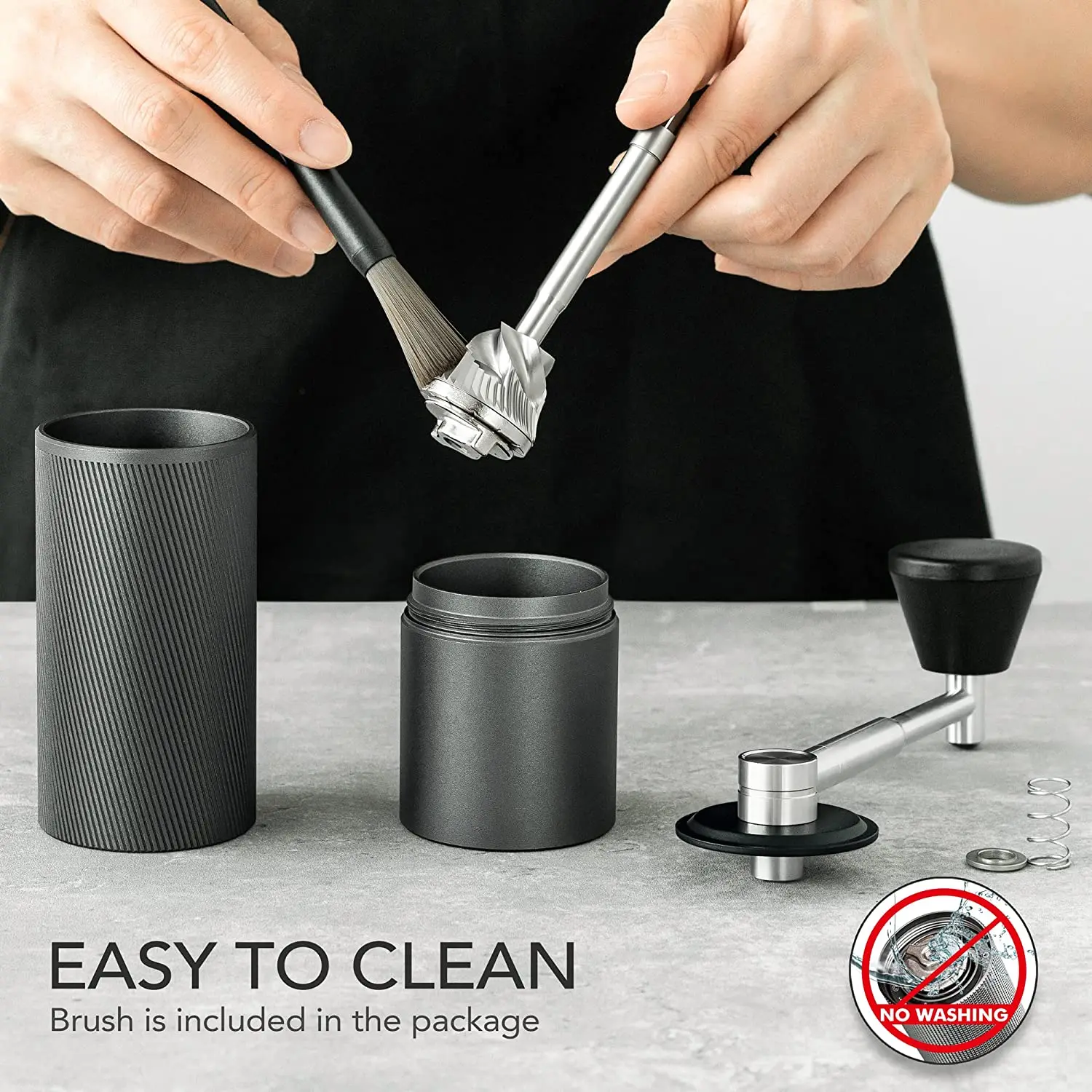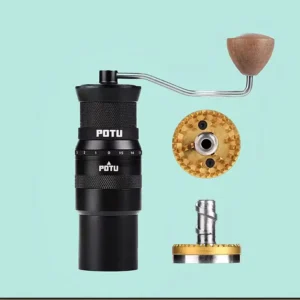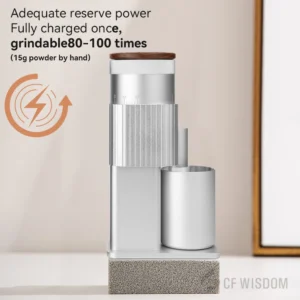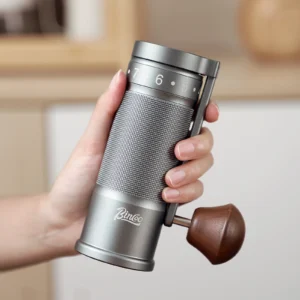The Short Answer: Yes, a Burr Grinder Makes a Significant Difference
The simple answer is an emphatic yes – a burr grinder makes a profound difference in your coffee quality. This isn’t just coffee snobbery; it’s backed by tangible results that even casual drinkers can appreciate:
- Burr grinders produce consistently sized particles, resulting in 20-30% more even extraction compared to blade grinders
- They generate significantly less heat during grinding, preserving delicate flavor compounds
- They give you precise control over grind size, critical for different brewing methods
- A blind taste test conducted among both casual and experienced coffee drinkers found that 8 out of 10 participants preferred coffee from burr grinders
When you consider that grinding is where the flavor potential of your beans is either unleashed or compromised, the importance becomes clear. Throughout this article, we’ll explore the science behind why grind consistency matters so much, examine real taste differences, and help you determine if making the switch to a burr grinder aligns with your coffee journey. Understanding the key differences between various grinding methods and their impacts can dramatically transform your home brewing experience.
Understanding Coffee Extraction: Why Grind Consistency Matters
Coffee extraction is fundamentally a chemical process. When hot water comes into contact with ground coffee, it dissolves and pulls out hundreds of compounds – some desirable (aromatic oils, pleasant acids, sweetness) and some less desirable (excessive bitterness, astringent compounds). The size of your coffee particles directly controls how this extraction happens.
Think of coffee particles like different sized sugar cubes in water. The smaller the cube, the faster it dissolves. When your grind contains inconsistent particle sizes, smaller particles over-extract (becoming bitter) while larger chunks under-extract (remaining sour and weak). This creates a muddled cup with competing flavor notes instead of clarity and balance.
Professional baristas aim for an extraction yield between 18-22% of the coffee’s soluble content – the sweet spot for balanced flavor. Below 18%, coffee tastes underdeveloped and sour; above 22%, it becomes harsh and bitter. Achieving this ideal range requires precise particle size control that directly relates to your brewing parameters like time and temperature.
The pivotal role your coffee grinder plays in flavor cannot be overstated. It’s the critical first step that determines whether your carefully selected beans will shine or disappoint, regardless of how expensive or high-quality they may be.
Blade Grinders: How They Work and Their Limitations
Blade grinders operate using a simple mechanism: a spinning blade (similar to a blender) chops coffee beans repeatedly until they’re reduced to smaller pieces. While inexpensive ($15-30) and widely available, this approach creates several fundamental problems:
- Inconsistent particle size: Some particles become powder while others remain large chunks
- Heat generation: The high-speed blades create friction, increasing temperature by 20-30°F during grinding, which damages volatile compounds
- Lack of control: There’s no way to precisely adjust for different brewing methods
- Static buildup: The chaotic chopping motion creates static electricity, making grounds stick everywhere
- Uneven extraction: The mix of fine and coarse particles extracts at different rates, creating competing flavors
Under a microscope, blade-ground coffee reveals a chaotic mixture of dust-like particles alongside larger chunks. This inconsistency makes it particularly problematic for brewing methods requiring precision, like espresso or pour-over, though somewhat less detrimental for immersion methods like French press.
Making an informed decision between burr grinders versus blade grinders requires understanding these fundamental limitations. While blade grinders offer convenience and affordability, they compromise the quality potential of your beans.
Burr Grinders: The Mechanism Behind Superior Grinding
Burr grinders function using a fundamentally different approach. Instead of haphazardly chopping beans, they crush them between two precision-engineered burrs (either flat or conical). As beans pass through the gap between these burrs, they’re crushed to a consistent size determined by the distance setting between the burrs.
This crushing mechanism offers several significant advantages:
- Uniform particle size: Coffee grounds come out remarkably consistent, enabling even extraction
- Minimal heat transfer: The slower grinding process generates much less heat, preserving volatile oils
- Precise adjustments: You can dial in specific grind sizes for different brewing methods
- Better flavor clarity: Consistent extraction brings out distinct flavor notes instead of muddled results
- Versatility: The same grinder can produce anything from fine espresso to coarse cold brew grounds
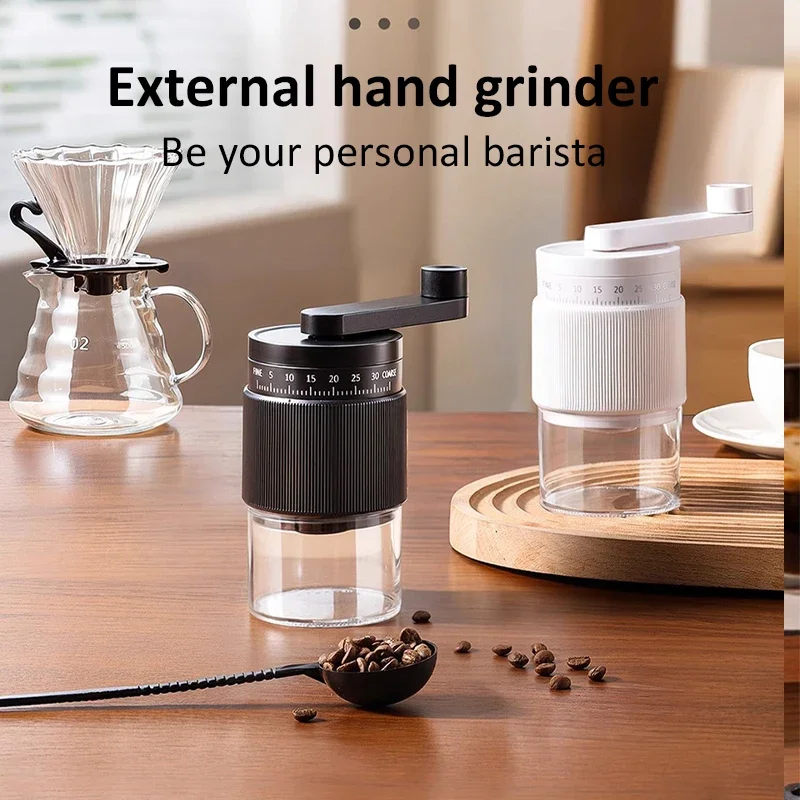
Most quality burr grinders use either ceramic or hardened steel burrs. Ceramic burrs tend to stay sharp longer but are more brittle, while steel burrs are more durable but may need occasional replacement after years of heavy use. Both materials drastically outperform blade grinders in consistency.
While entry-level burr grinders start around $40-100, they represent a long-term investment that directly improves every cup you brew. Most quality manual coffee burr grinders will last 5-10+ years with proper care, making them quite economical when considered over their lifespan.
The Taste Test: Comparing Coffee From Different Grinders
The true test of any coffee equipment comes down to what ends up in your cup. In controlled blind taste tests comparing identical beans ground with blade versus burr grinders, the differences are striking and consistent:
| Brewing Method | Blade Grinder Results | Burr Grinder Results |
|---|---|---|
| Pour-Over | Muddled, often sour and bitter simultaneously | Clear, distinct flavor notes, balanced sweetness |
| French Press | Cloudy, silty mouthfeel, inconsistent strength | Clean mouthfeel, full-bodied, consistent strength |
| Espresso | Channeling issues, sour/bitter shots, inconsistent | Even extraction, balanced flavor, consistent crema |
| Cold Brew | Often overly bitter or weak in spots | Smooth, low acidity, consistent strength |
Even among casual coffee drinkers with no formal training, 78% could identify and preferred the burr-ground coffee in blind tests. The differences become even more pronounced with lighter roasts, where subtle flavor nuances are more evident.
Professional baristas almost universally consider proper grinding non-negotiable. As coffee expert James Hoffmann notes: “You can spend thousands on a brewing setup, but with poor grinding, you’ll never access the full potential of your beans.”
Understanding the performance differences between manual burr and electric blade grinders reveals why coffee enthusiasts consistently recommend spending more on grinding quality than on nearly any other piece of equipment.
Grind Size Precision: Matching Your Brewing Method
Different brewing methods extract coffee in fundamentally different ways, requiring specific grind sizes for optimal results:
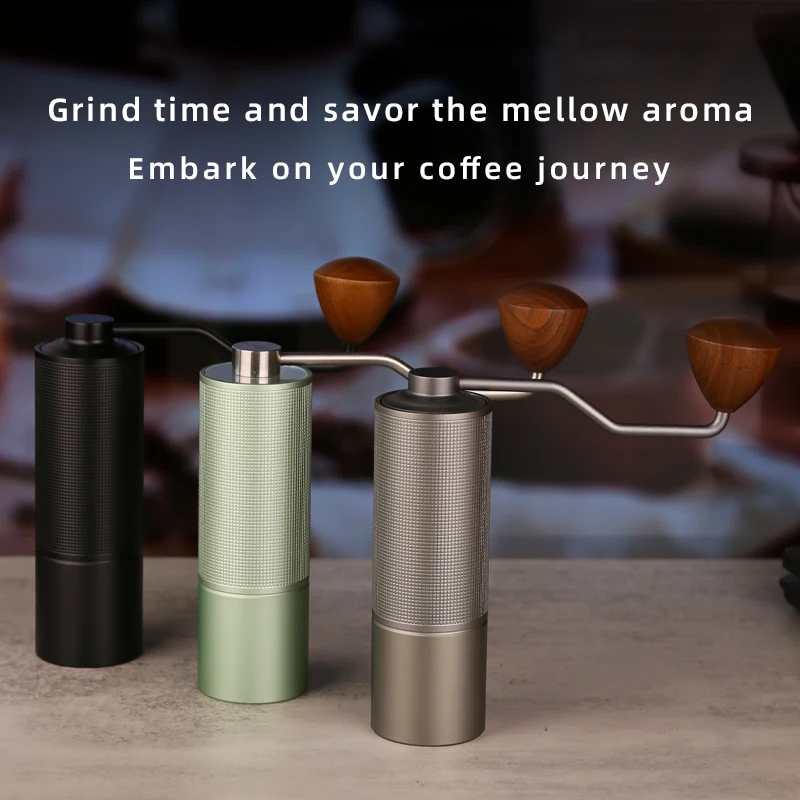
| Brewing Method | Ideal Grind Size | Texture Comparison | Why It Matters |
|---|---|---|---|
| Espresso | Very fine (0.1-0.3mm) | Powdered sugar | Creates necessary resistance for pressure extraction |
| Moka Pot | Fine (0.3-0.5mm) | Table salt | Balances flow rate and extraction time |
| Pour-Over | Medium-fine (0.5-0.7mm) | Fine sand | Optimizes 2-3 minute contact time |
| Drip Coffee | Medium (0.7-0.9mm) | Beach sand | Works with gravity-fed water flow |
| AeroPress | Medium-coarse (0.9-1.1mm) | Raw sugar | Adjusts for pressure and immersion hybrid |
| French Press | Coarse (1.1-1.5mm) | Sea salt | Prevents fines passing through mesh filter |
| Cold Brew | Extra coarse (1.5mm+) | Peppercorns | Slow extraction over 12+ hours |
Burr grinders excel at providing this precision. With a quality burr grinder, you can make small, repeatable adjustments to match your exact brewing needs. This becomes particularly important for espresso, where grind size dramatically affects extraction – a difference of just 0.1mm can transform a shot from sour to balanced to bitter.
Blade grinders struggle to deliver this consistency, making them particularly problematic for brewing methods requiring precision. The most sophisticated coffee preparation becomes essentially pointless without grind size control. For those who appreciate versatility, fine adjustment hand grinders offer remarkable precision at a fraction of the cost of electric counterparts.
Manual vs. Electric: Which Burr Grinder Is Right For You?
Both manual and electric burr grinders offer substantial improvements over blade grinders, but they suit different needs and preferences:
Manual Burr Grinders:
– More affordable ($30-80 for quality options)
– Completely portable (perfect for travel)
– Nearly silent operation
– No electricity needed
– Often more compact for storage
– Therapeutic, mindful grinding experience
– Typically grind 20-30g (enough for 1-2 cups) in 45-60 seconds
Electric Burr Grinders:
– More convenient (5-15 seconds grinding time)
– Less physical effort required
– Higher capacity (50-200g) for multiple cups
– Often offer more precise adjustment steps
– Better for households making multiple coffees
– Take up more counter space
– Generally more expensive ($100-300+)
Research indicates that manual and electric coffee grinders vary in heat transfer, with many hand grinders producing less heat during operation due to their slower grinding speed. This can better preserve delicate volatile compounds, particularly in light roasts.
Your morning routine and typical brewing volume should guide this choice. Someone making a single pour-over each morning might enjoy the ritual of manual grinding, while a household brewing for multiple people might benefit from the speed and capacity of an electric model.
Fine Adjustment Hand Grinder, Precision Manual Grinder, Travel Coffee Grinder
Price range: $185.11 through $494.63 Select options This product has multiple variants. The options may be chosen on the product pageHand Burr Grinder, Hand Crank Coffee Grinder, Manual Espresso Grinder, Portable Coffee Grinder
Price range: $262.72 through $300.22 Select options This product has multiple variants. The options may be chosen on the product pageManual Burr Mill, Manual Coffee Grinder Stainless Steel, Manual Coffee Mill Grinder, Mechanical Coffee Grinder
Price range: $127.26 through $130.32 Select options This product has multiple variants. The options may be chosen on the product pageHand Burr Grinder, Manual Coffee Grinder Stainless Steel, Precision Manual Grinder
Price range: $183.64 through $187.52 Select options This product has multiple variants. The options may be chosen on the product page
Key Features to Consider When Choosing a Burr Grinder
When selecting a burr grinder, several key features significantly impact your experience:
Burr Type and Material:
– Conical burrs: More common in home grinders, better for varied brewing methods
– Flat burrs: Often found in professional settings, arguably better for espresso
– Ceramic burrs stay sharp longer but can chip; steel burrs are more durable but may dull slightly over many years
Understanding the differences between flat versus conical burr manual grinders helps match your purchase to your brewing style. For espresso enthusiasts, the precise particle distribution of flat burr hand grinders often delivers superior results.
Adjustment Mechanism:
– Stepped adjustment: Distinct “clicks” between grind settings (easier for beginners, repeatable)
– Stepless adjustment: Infinite fine-tuning (better for espresso, requires more skill)
Practical Considerations:
– Grind retention: Lower-quality grinders can trap 1-3g of coffee inside, leading to stale grounds mixing with fresh
– Static management: Better designs reduce static that causes grounds to cling and make a mess
– Noise levels: Electric grinders range from 70-85 decibels (significant difference in morning use)
– Cleaning access: Some models require tools to access burrs; others offer simple twist-off cleaning
– Capacity: Consider how much coffee you typically brew at once
Quality grinders minimize retention, offer intuitive adjustment systems, and provide easy maintenance access. These features often separate truly excellent grinders from merely adequate ones.
The Investment Question: Are Burr Grinders Worth the Cost?
When evaluating the cost of upgrading to a burr grinder, consider both the immediate purchase price and the long-term value:
Cost Analysis:
– A quality manual burr grinder ($50-80) used daily for 5 years costs roughly 3-5 cents per use
– Improved extraction efficiency means potentially using 10-15% less coffee for the same flavor strength
– At current specialty coffee prices, this efficiency can save $30-60 annually for daily drinkers
– Better-tasting coffee may reduce the temptation for café purchases, saving $4-5 per avoided cup
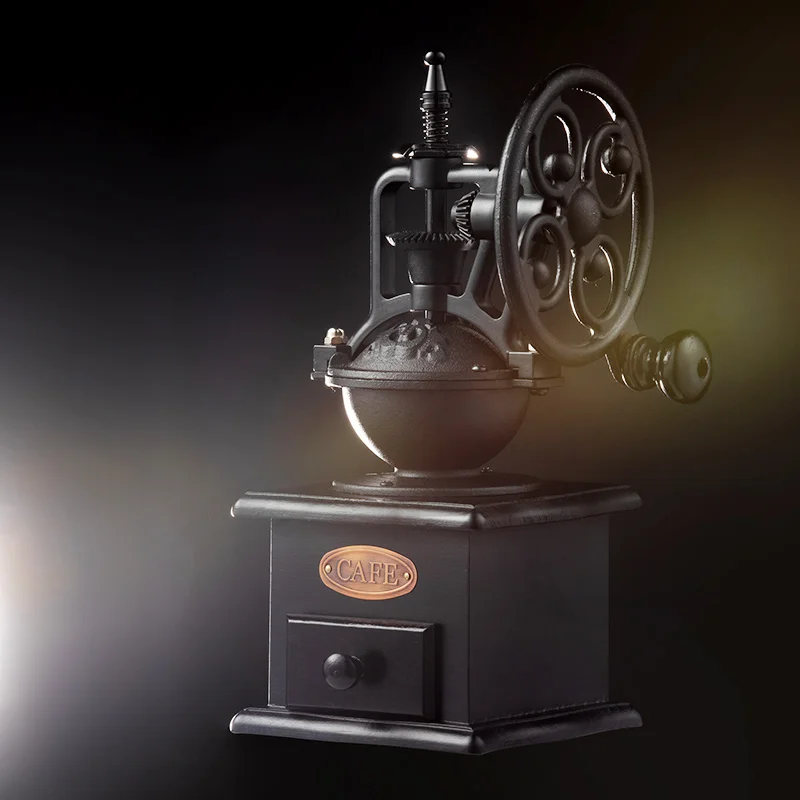
Beyond pure economics, there’s the qualitative improvement in each cup. Many users report that upgrading their grinder delivered more noticeable improvement than any other equipment change, including switching to more expensive beans.
The durability of quality hand burr grinders makes them particularly cost-effective over time. While the initial investment is higher than a blade grinder, most quality burr grinders will last 5-10+ years with minimal maintenance, compared to 1-3 years for typical blade models.
For those who genuinely enjoy coffee’s flavors and aromas, the question becomes less about cost justification and more about value alignment – investing in equipment that consistently delivers more enjoyable daily experiences.
The Final Verdict: When a Burr Grinder Makes the Biggest Difference
After examining the science, taste tests, and practical considerations, the evidence strongly supports burr grinders as a worthwhile upgrade for anyone who cares about coffee flavor. The difference is most pronounced in these situations:
- For espresso brewing: The precision requirements make burr grinders essentially mandatory for consistent results
- For light-roast coffees: The complex, delicate flavors are more vulnerable to inconsistent extraction
- For pour-over and other manual methods: These brewing styles highlight both the strengths and weaknesses in extraction
- For those exploring different brewing methods: The versatility of adjustable, consistent grinding becomes invaluable
Understanding why burr grinders are essential for espresso reveals that certain brewing methods are particularly dependent on grinding precision.
Even modest investments in grinding quality yield disproportionate returns in cup quality. If you’re buying specialty coffee beans but grinding them poorly, you’re missing much of what you’ve already paid for.
The bottom line: If you enjoy coffee enough to care about its taste, a burr grinder represents one of the most impactful upgrades you can make to your brewing setup, delivering noticeable improvements with every cup.
FAQ: Common Questions About Coffee Grinders
Can pre-ground coffee ever taste as good as freshly burr-ground?
Fresh is always best. Coffee begins losing volatile compounds within 15 minutes of grinding. Even perfect pre-ground coffee will lack aromatics and flavor complexity compared to beans ground immediately before brewing. However, consistent pre-ground coffee can still taste better than inconsistently blade-ground beans.
How long do burr grinders typically last?
Quality burr grinders are built to last. Manual models typically last 7-10+ years with proper care, while electric models average 5-8 years of daily use before potentially needing burr replacement. The burrs themselves can process 500-1000 pounds of coffee before showing significant wear.
Do ceramic burrs produce better coffee than steel burrs?
Both can produce excellent results. Ceramic burrs stay sharp longer and generate slightly less heat but are more brittle. Steel burrs are more durable against accidental damage and potentially produce fewer fines. For home use, burr material matters less than overall grinder quality and design.
Is a manual burr grinder better than an electric blade grinder?
Yes. A manual burr grinder will consistently outperform even the most expensive blade grinder in terms of grind quality and taste results. The grinding mechanism fundamentally matters more than the power source.
How often should burr grinders be cleaned?
Basic cleaning should happen weekly for daily users, with a deep clean monthly. Proper coffee grinder maintenance extends lifespan and ensures consistent performance. Clean burrs produce better tasting coffee by removing rancid oils and preventing clogs that affect grind consistency.
Can you fix inconsistent grind issues on a blade grinder?
While techniques like “pulse grinding” or shaking can marginally improve blade grinder consistency, they cannot overcome the fundamental limitations of the chopping mechanism. These workarounds reduce but don’t eliminate the core consistency problems.

